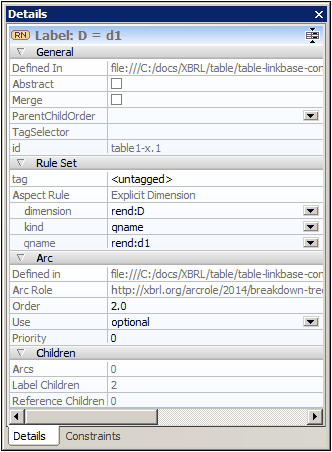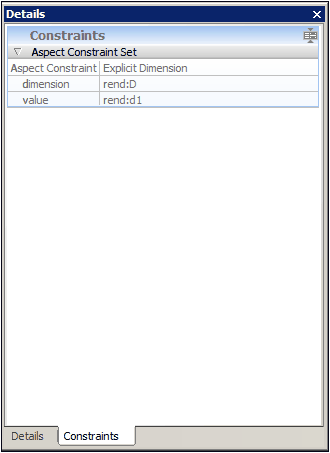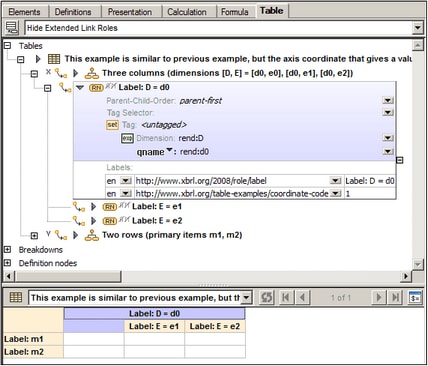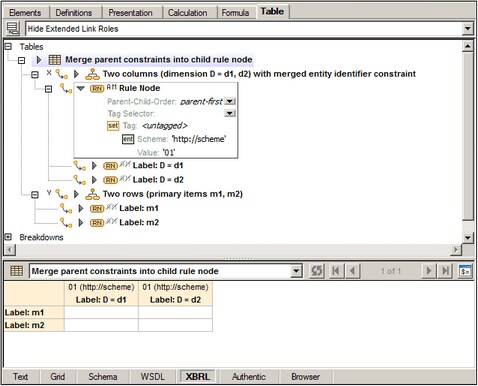Rule Nodes
A rule node defines aspect rules for one or more aspects: concept, period, unit, entity identifier, dimension, or open content aspect. The component in the definition tree corresponds with exactly one cell in the layout if the rule node is abstract or has no children. Otherwise, the layout contains an additional roll-up cell whose placement is determined by the effective value of the rule node's property parentChildOrder:
The header of the layout cell is calculated from the rule node as follows:
•If the node is associated with a user-defined label, this label's text is displayed.
•If there is no label, but the node defines a single aspect constraint (concept, dimension, unit, entity-identifier, or period), its value is shown (for example, the concept's qualified name).
•Otherwise, the static text Rule node is used.
Details entry helper
The definition node's properties are shown in the Details tab of the Details entry helper (screenshot below left). The Constraints tab (screenshot below right) provides a read-only view of the aspect constraint set/s that are calculated from the rule node's aspect rules.


Merged rule nodes
A merged rule node indicates additional properties which apply to all of its children, that is, it contributes all of its constraints to every constraint set produced by its children (see screenshot below).

